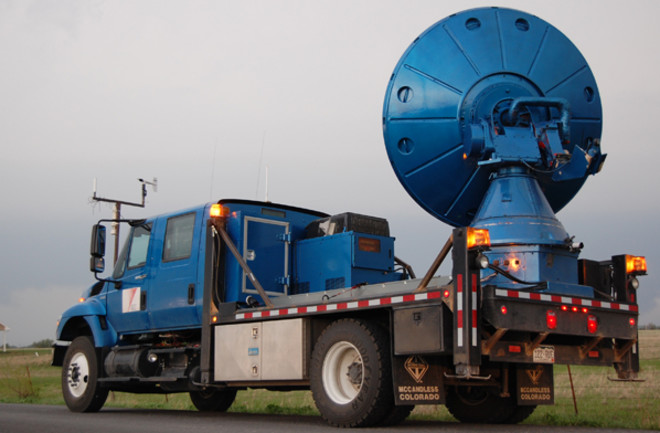On the evening of May 4, 2007, at around 7:30 p.m., a young forecast meteorologist named Mike Umscheid began tracking a storm in northern Oklahoma. He watched as it grew, in a mere 15 minutes, from “this little blip” on a radar monitor to a supercell—more colloquially known as a violent thunderstorm. “It was amazing how quickly it developed,” he recalls. This was the height of tornado season, and Umscheid, with three other meteorologists at the National Weather Service in Dodge City, Kansas, was entrusted with the safety of 27 counties in the state’s southwest.
The storm he was tracking was unusually intense; it retained its potency for six and a half hours, cyclically producing an estimated 22 tornadoes. But the storm region was sparsely populated, and the 28-year-old Umscheid believed the high winds would sweep harmlessly over empty fields. At 9:19 p.m., using what he calls a “nifty little tool”—a forecast and warning software program—he sketched a polygon to plot the trajectory of one increasingly violent tornado. “Oh, my God,” he thought, “it’s making that northward turn.”
Less than 20 miles to the north lay the town of Greensburg, Kansas—population about 1,500—right in the high-risk zone. At this point, Umscheid knew that every minute of advance warning would reduce the number of casualties there. He quickly proofread the computer-generated warning text and hit the send button.
Living in the center of “tornado alley,” the people of Greensburg were accustomed to hearing the siren that announced approaching storms, especially during peak tornado season, April through June. So the urgent wail on May 4 was not that unusual. Fifty-four-year-old John Haney finished filling his gas tank and headed home, where he and his wife tried to block the windows of their house. Massage therapist Carmen Renfrow, 59, gathered her three dogs and cat and set off for her sister’s basement. Others throughout the sprawling, sparsely populated? Great Plains town did much the same, with no way of knowing the extent of the force that was about to hit them.
Tornado prediction remains frustratingly unreliable, with an average warning time of only 13 minutes and a false-alarm rate of around 75 percent. Applied to unfolding, real-time events, prediction seems too grandiose a term for what is often a sighting on radar or in the open fields and an exclamation of “Look, the storm has a hook!” Yet every spring and early summer, with about 1,000 tornadoes of varying intensities charging across America’s central states, residents of the area depend on these last-minute alerts to let them know when to seek shelter.

